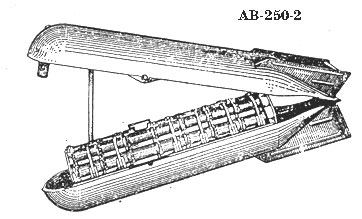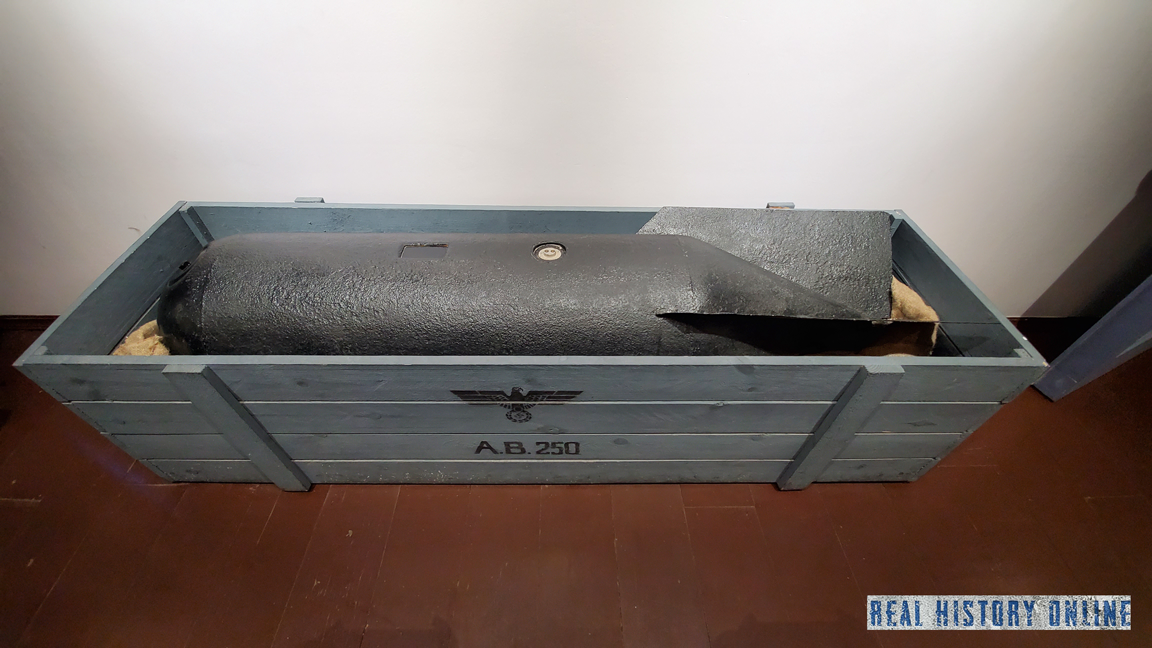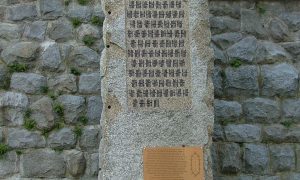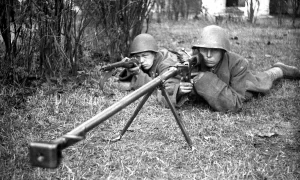The bomb was produced in two versions with a cast or forged body. It had 4 stabilizers made of sheet steel, which were attached to the ribs welded to the body with screws or rivets. Filler – steel balls filled with concrete. The fuse was screwed onto the nose of the bomb. Suspension – vertical in bundles of 5 units. The body and tail are painted dark gray. TTX bombs: weight – 12 kg; explosive mass – 0.9 kg; length – 585 mm; diameter – 86 mm.

The body of the AB 250-2 was constructed of mild sheet steel and was of clamshell construction and hinged at the tail. It was divided into three compartments; a dome-shaped nose compartment, a cylindrical center compartment, and a cone-shaped tail compartment. The nose compartment housed the fuze pocket which was welded to a bracket on the upper half of the container. The two halves were held together by a shear wire which passed through a steel anvil, in the lower part of the fuze pocket. When the fuze is triggered, this wire was sheared by a small exploder under the fuze. The case then opened and allowed the bombs to fall out. The tail unit had four fins that were welded to the container with braces riveted between each fin.
A number of different sub-munition configurations were possible:
- 224 x SD 1 A or SD 1 FRZ – These were stored in the central compartment. The bombs were packed nose to tail with the tail cup of each bomb forming a safety device for the nose fuze of the bomb behind it. Both bomb types were loaded in the same manner.
- 144 x SD 2 – These were small anti-personnel bombs that were stored in the central compartment.
- 40 x SD 4 HL – These were stored in the central compartment and were packed nose to tail in clusters of 20 with the tail cup of each bomb forming a safety device for the nose fuze of the bomb behind it.
- 17 x SD 10 A – These were stored in the central compartment in a plywood or cardboard box with a center divider. The front half contained eight bombs while the rear held nine. The bomb clusters were held together with steel bands and the clusters were held in place by wooden blocks.
- 17 x SD 10 FRZ – These were stored in the central compartment in a plywood or cardboard box with a center divider in the same way as SD 10 A bombs.
- 28 x SD 10 C – Unknown configuration.

The period between the two world wars became a real arms race. The prototype of the Soviet cluster bombs was the rotational dispersal bomb. Its peculiarity was that it could be used not only by dropping it from an aircraft, but also from the ground.












